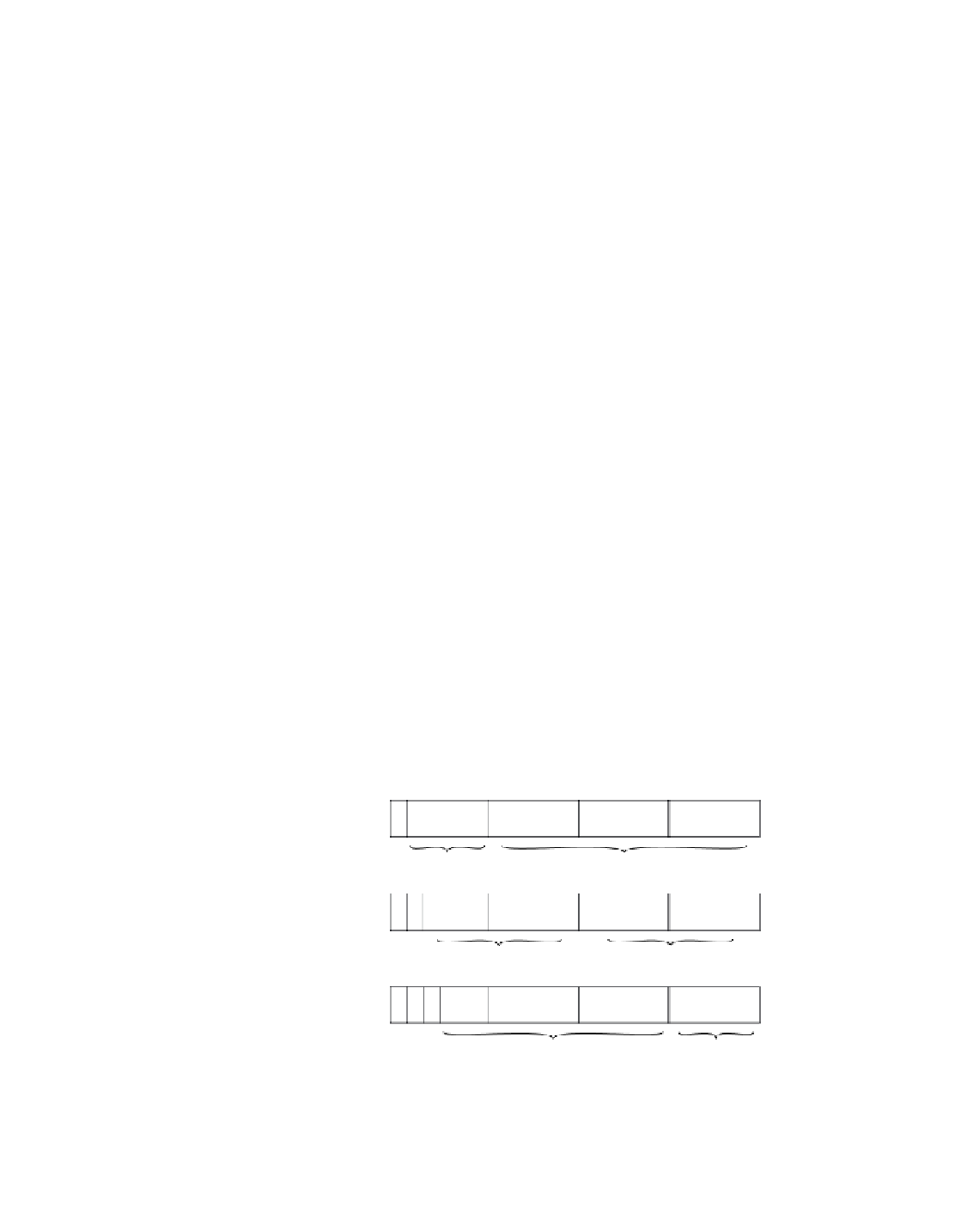Information Technology Reference
In-Depth Information
Addressing
As with all network layer protocols, the addressing scheme is integral to the process of routing IP
datagrams through an internetwork. An IP address is 32 bits in length, divided into either two or three
parts. The first part designates the network address, the second part (if present) designates the subnet
address, and the final part designates the host address. Subnet addresses are present only if the network
administrator has decided that the network should be divided into subnetworks. The lengths of the
network, subnet, and host fields are all variable.
Today's Internet does not segment addresses along classful bounds—it is almost entirely classless. The
separation between networks and subnets has been effectively eliminated. The requirement to
understand network classes and the difference between a network and a subnet remains solely because
of configuration and behavioral issues with network devices.
IP addressing supports five different network classes, and the high-order—far-left—bits indicate the
network class:
•
Class A networks provide 8 bits for the Network Address field. The high-order bit (at far left) is 0.
•
Class B networks allocate 16 bits for the Network Address field and 16 bits for the Host Address
field. This address class offers a good compromise between network and host address space. The
first 2 high-order bits are 10.
•
Class C networks allocate 24 bits for the Network Address field. Class C networks provide only 8
bits for the Host field, however, so the number of hosts per network may be a limiting factor. The
first 3 high-order bits are 110.
•
Class D addresses are reserved for multicast groups, as described formally in RFC 1112. The first 4
high-order bits are 1110.
•
Class E addresses are also defined by IP but are reserved for future use. The first 4 high-order bits
are 1111.
IP addresses are written in dotted decimal format (for example, 34.10.2.1). Figure 7-3 shows the address
formats for Class A, B, and C IP networks.
Figure7-3
Class A, B, and C Address Formats
Class A
0
Network
Host
Class B
1
0
Network
Host
Class C
1
1
0
Network
Host
IP networks can also be divided into smaller units called subnets. Subnets provide extra flexibility for
network administrators. For example, assume that a network has been assigned a Class B address, and
all the nodes on the network currently conform to a Class B address format. Then assume that the dotted
decimal representation of this network's address is 172.16.0.0 (all zeros in the Host field of an address







